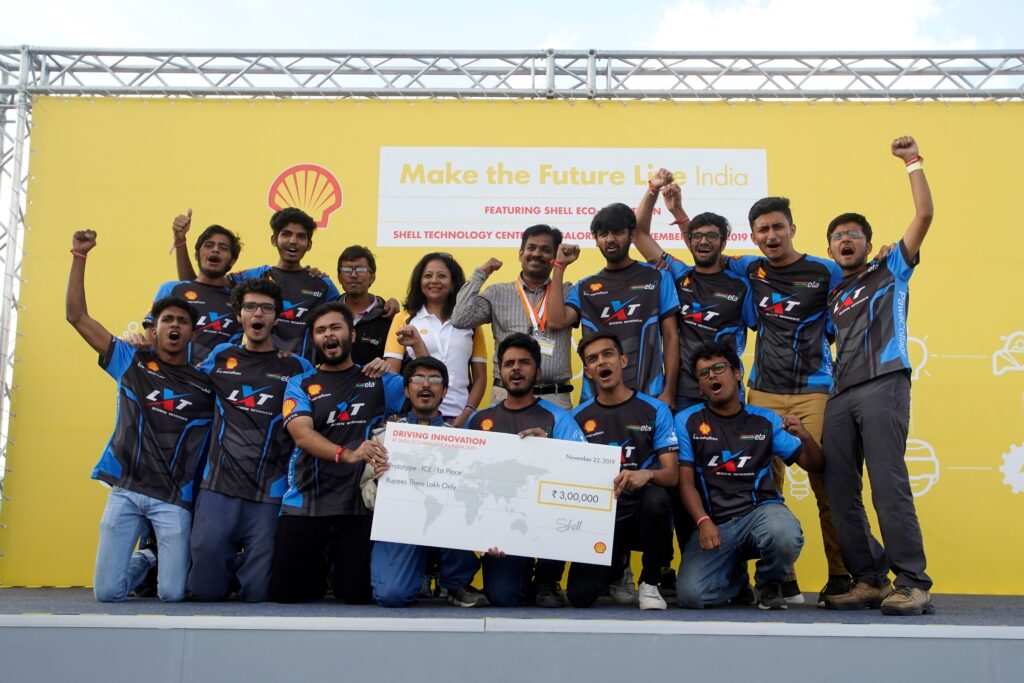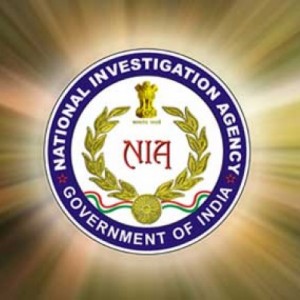TEAM AVERERA FROM IIT-BHU CLOCKS THE BEST MILEAGE AT SHELL’S ‘MAKE THE FUTURE LIVE INDIA 2019’

Team ETA, race number 72, winners of the Prototype Internal Combustion award on Day 4 of Shell Make the Future India 2019 at the Shell Technology Centre on Friday, Nov. 22, 2019, Bengaluru, India. (Bernat Parera/Shell)
Bengaluru, November 22, 2019: The second edition of Shell’s ‘Make the Future Live India 2019’, featuring the Shell Eco-marathon competition has drawn to a close. Of the 24 participating teams, team AVERERA from Indian Institute of Technology – Banaras Hindu University clocked the best mileage of 387.9 km/kwh in the Battery electric prototype category.
Members of the team said, “It feels great to be the champions again and retain the title in Shell Eco-marathon 2019. We have worked very hard to be where we are today and would like to thank all our supporters, sponsors and our institute. Shell events are always a challenge and we continue to learn and grow with every passing year. We would like to thank Shell for all the support, motivation and for providing this great opportunity to hone our capabilities.”
Shell Eco-marathon results
On-track Awards
The list of the winning teams in each award category is as follows:
| ON-TRACK AWARDS | ||
| WINNER | RESULT | |
| Battery Electric Prototype | Team Averera
Indian Institute of Technology – Banaras Hindu University |
387.9 km/kwh |
| ICE Prototype | Team ETA
K.J. Somaiya College of Engineering |
268.7 km/l |
| ICE Urban Concept | DTU Supermileage
Delhi Technological University |
141.4 km/l |
Off-track Awards
This year, Shell Eco-marathon India had four awards in the ‘Off-track’ category: Communications, Technical Innovation, Safety, and Circular Economy.
Communications Award
Team Infieon Supermileage from SRM University, Chennai won the prize money of Rs 2,50,000 in this award category for executing an impactful communications campaign to promote their team in the competition.
Technical Innovation Award
Team Averera from Indian Institute of Technology – Banaras Hindu University demonstrated exceptional technical ingenuity and innovation in developing their battery electric prototype. They were awarded prize money of Rs 2,50,000.
Safety Award
Team ETA from K.J. Somaiya College of Engineering, Mumbai was the winner in the award category for demonstrating exceptional behavioural safety and safe working practices both in the paddocks and on the track. The team was recognized for their overall approach to ensuring their own and other people’s safety during the competition. They won a prize money of Rs 2,50,000 for their efforts.
Circular Economy Award
The newly added ‘Circular Economy’ award was presented to team E^2 from Graphic Era University, Uttarakhand for demonstrating circular economy thinking in the concept, design and/or execution of vehicle production, functioning and/or disassembly process. The objective of this category is to motivate students to think how they can integrate the concept of circular economy in engineering materials, products and services for real-life industrial and consumer solutions. The team received Rs 2,50,000 in prize money.
NXplorers
Make the Future Live India also showcased several projects developed by students of the NXplorers program – Shell’s innovative educational programme focused on the food-water-energy nexus which aims to build awareness, develop knowledge and provide thinking tools and complex problem solving skills to the leaders of the future.
Some of the projects on display included the Zero Carbon Electricity Generation model which involves capturing kinetic energy from students playing on sensors installed in school grounds to generate energy for school kitchen gardens, toilets and water faucets; a project which details integrated farming by diverting poultry and food waste for agriculture while generating biogas and electricity from available resources at the same time. Also on display was a unique project inspired from Namibian beetles, cactus plants and the insectivorous Pitcher plant, which enables it to collect water vapor from air and use it for irrigation.








